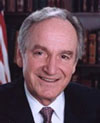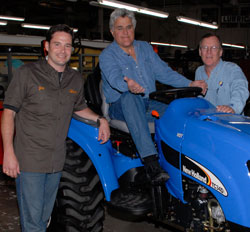 As livestock producers continue to voice concerns about rising feed costs, proposed “transition assistance” for farmers to grow dedicated energy crops was introduced this week in legislation sponsored by Senators Tom Harkin (D-IA) Amy Klobuchar (D-MN) and Kent Conrad (D-SD).
As livestock producers continue to voice concerns about rising feed costs, proposed “transition assistance” for farmers to grow dedicated energy crops was introduced this week in legislation sponsored by Senators Tom Harkin (D-IA) Amy Klobuchar (D-MN) and Kent Conrad (D-SD).
“Farmers are going to be a key part of our nation’s ability to achieve energy independence,” said Klobuchar. “These crops could revolutionize how we look at energy just like ethanol and biodiesel have. Now its time for Congress to act and reward our farmers at home, protect the environment, and pave the way for tomorrow’s energy.”
 Harkin, chairman of the Senate Ag Committee, said in a press release that the Farm-to-Fuel Investment Act “charts a course for initiating the extensive production of biomass feedstocks while continuing to protect wildlife and promote sound soil and water conservation practices.”
Harkin, chairman of the Senate Ag Committee, said in a press release that the Farm-to-Fuel Investment Act “charts a course for initiating the extensive production of biomass feedstocks while continuing to protect wildlife and promote sound soil and water conservation practices.”
The bill would provide three years of transition assistance to farmers who produce dedicated energy crops in an area 50 miles around a biorefinery that will produce fuels like cellulosic ethanol. Incentives are needed for the first few years because it takes about three years for crops like switchgrass to reach their first mature harvest. The three-year period also takes into account the time needed to develop a biorefinery to purchase the crop. After a market has developed and the crops have matured, the transition assistance would phase out.

Senator Conrad said he is supporting this legislation “because I believe that North Dakota can help this nation grow its way out of our dependency on foreign energy – whether it’s from cellulosic ethanol or biodiesel. It’s time we turned from the Mid East for our energy and turned instead to the Mid West.”
To participate, farmers would have to agree to adopt conservation practices for soil quality, water quality and wildlife habitat. This legislation also allows for an additional incentive to farmers who produce native perennial energy crops, such as prairie grass mixtures, because of the tremendous conservation benefits those crops provide. Perennial grasses protect soil and water quality, sequester carbon, create wildlife habitat and save farmers money on fuel and fertilizer.


 The North Central Ohio community of Marion is located in Marion County 50 miles north of Columbus. POET Biorefining Marion, a $130 million production facility, will annually produce 65 million gallons of ethanol and 178,000 tons of premium Dakota Gold Enhanced Nutrition Distillers Products™ from 21 million bushels of locally grown corn.
The North Central Ohio community of Marion is located in Marion County 50 miles north of Columbus. POET Biorefining Marion, a $130 million production facility, will annually produce 65 million gallons of ethanol and 178,000 tons of premium Dakota Gold Enhanced Nutrition Distillers Products™ from 21 million bushels of locally grown corn.  This week I made a trip with Joe Jobe (left), CEO of the National Biodiesel Board to Jay Leno’s Garage. Jay’s on the New Holland tractor and next to him on the right is New Holland head of industry affairs, Gene Hemphill. We were there to tape a video for Jay’s website which should be published there sometime in the coming weeks.
This week I made a trip with Joe Jobe (left), CEO of the National Biodiesel Board to Jay Leno’s Garage. Jay’s on the New Holland tractor and next to him on the right is New Holland head of industry affairs, Gene Hemphill. We were there to tape a video for Jay’s website which should be published there sometime in the coming weeks. The project, a state of the art dental center located in the city of Connersville, Indiana — The Christie Family Dentistry — featuring some of the most technologically advanced dental equipment, will now be the first in the state to be powered by solar energy with this newly installed 20-kilowatt solar roof. This 20-kilowatt system will be one of the largest photovoltaic projects in Indiana and will provide up to one-half of the facility’s power requirements. This will be the first solar installation in Indiana to utilize solar roof tiles instead of standard panels.
The project, a state of the art dental center located in the city of Connersville, Indiana — The Christie Family Dentistry — featuring some of the most technologically advanced dental equipment, will now be the first in the state to be powered by solar energy with this newly installed 20-kilowatt solar roof. This 20-kilowatt system will be one of the largest photovoltaic projects in Indiana and will provide up to one-half of the facility’s power requirements. This will be the first solar installation in Indiana to utilize solar roof tiles instead of standard panels.  The
The